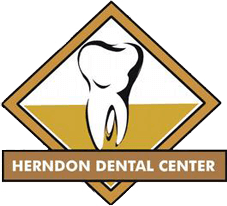Tooth Anatomy: An Overview of Your Teeth
Introduction
Your teeth serve many purposes. They help you chew food. Teeth work with your tongue to help you form sounds to speak. Teeth also create your beautiful smile and give your face its shape. Teeth vary in shape, size, location, and function.
Teeth start to develop before a baby is born. Between the ages of six months and one year old, a baby’s first teeth began to come through the gums. Most children have their 20 primary “baby” teeth by the age of three.
Beginning at the age of five or six, the primary teeth fall out. They are replaced by permanent teeth. Most teenagers have their 28 permanent teeth by about age 14. Four more teeth come in at around age 20. These teeth, the wisdom teeth, are located at the very back of the mouth. Not all people develop four wisdom teeth and it is very common to have them removed.
Tooth Anatomy
Each of your teeth is composed of enamel, dentin, cementum, and pulp. Your teeth have a hard protective covering. Enamel covers the crown or the part of the tooth that you can see. Cementum protects the root of the tooth underneath the gum line. Underneath the enamel and cementum is a layer of dentin. Dentin contains tiny canals that extend to the roots of your teeth.
Each of your teeth contains one or more tiny passageways called root canals. Your back teeth contain more root canals than your front teeth. Inside each tooth, the root canal branches off from beneath the surface and extends to the tip of the root. The location and shape of each root canal varies from tooth to tooth.
Your root canals and the interior of your teeth contain pulp. Pulp contains blood vessels, nerves, and connective tissue. Pulp nourishes teeth when they first emerge and are forming. When a tooth is mature, it is supported by a blood supply that establishes around the tooth. Your teeth are positioned and held in place on your jawbone by periodontal ligaments, cementum, and your gums.
Tooth Types
Your teeth differ in shape, size, and location. They all serve different functions related to eating. Adults have 28 functional teeth and possibly four wisdom teeth, which in some patients do not have a function.
The four center teeth on the top and bottom of your jaw are called incisors. You use these teeth to bite off pieces of food. Located next to the incisors are your cuspids, “canine teeth.” You have two cuspids on top and two on the bottom. Your cuspids are rather pointed and sharp. Their purpose is to cut food when you bite.
Your first and second premolars or bicuspids are located next to your cuspids. You have four premolars on top and four on the bottom. Premolars are larger and stronger than your incisors and cuspids. Premolars have ridges that crush and grind food when you chew.
Your first and second molars are located in the back of your mouth. You have four on the top and four on the bottom. Your molars are stronger and wider than your premolars. They have more ridges for grinding and chewing food before you swallow.
Wisdom teeth are the third and final set of molars. Some people may not develop a full set of wisdom teeth. Others may not develop any at all. It is very common for wisdom teeth to be removed.


Copyright © - iHealthSpot Interactive - www.iHealthSpot.com
This information is intended for educational and informational purposes only. It should not be used in place of an individual consultation or examination or replace the advice of your health care professional and should not be relied upon to determine diagnosis or course of treatment.
The iHealthSpot patient education library was written collaboratively by the iHealthSpot editorial team which includes Senior Medical Authors Dr. Mary Car-Blanchard, OTD/OTR/L and Valerie K. Clark, and the following editorial advisors: Steve Meadows, MD, Ernie F. Soto, DDS, Ronald J. Glatzer, MD, Jonathan Rosenberg, MD, Christopher M. Nolte, MD, David Applebaum, MD, Jonathan M. Tarrash, MD, and Paula Soto, RN/BSN. This content complies with the HONcode standard for trustworthy health information. The library commenced development on September 1, 2005 with the latest update/addition on February 16, 2022. For information on iHealthSpot’s other services including medical website design, visit www.iHealthSpot.com.


